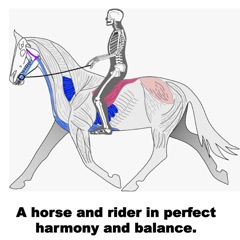
Comparison of horse riding and trunk stability exercise on balance
Balance is essential in daily life in both sitting and standing. Different treatments have been developed, and research has shown that trunk stability exercises have a positive effect on balance. This article aims to investigate the difference in balance after horse riding exercises compared to trunk stability exercises.
In this randomised control trial, 22 healthy adults were randomly assigned to an eight week horse riding course or a trunk stability course. Base line measurements concerning postural sway were recorded using a force platform.
The results showed that anterior-posterior velocities and medial-lateral velocities decreased significantly in both exercises groups. However, there was a statistically significant (p<0.05) improvement in the sway times of the centre of mass in the riding group (pre-intervention 19.0 seconds to post intervention 12.2 seconds) as compared to the trunk stability group (pre-intervention 18.1 second to post intervention of 13.3 seconds).
This significant improvement in balance in the riding group is explained by the movement the horse rider’s pelvis makes due to the symmetrical movement of the horse walking. This triggers automatic physical responses including static and dynamic movements of the trunk and pelvis, movement of the centre of gravity, and rotational movements of the spine. Horse riding simultaneously improves muscle strength and neurological factors, leading to an improved balance. Possibly with more research, horse riding could become a revolutionary new balance treatment.
> Kim et al., J Phys Ther Sci. 2014;26(9):1325-1327. All rights reserved to the Society of Physical Therapy Science 2014. Click here for the full-text on Pubmed


